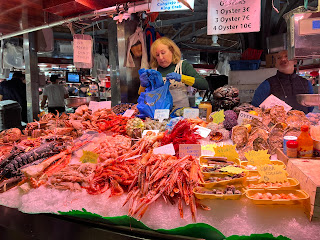Advice for First-Time Cruisers to Europe: Embracing History and Culture
For many travelers, their first cruise experience is to the Caribbean, where the focus is often on relaxation, lounging on the beach, strolling around the port, buying souvenirs, and enjoying drinks near the ship. Caribbean cruises are typically about escaping the cold or unwinding in a tropical paradise, rather than immersing oneself in deep historical or cultural exploration.
However, cruising to Europe and other historically rich regions such as Asia, South America, or Oceania offers a completely different experience. These destinations are filled with centuries-old architecture, world-class museums, breathtaking cityscapes, and cultural traditions that have shaped civilizations for millennia. To truly appreciate what these ports have to offer, it’s essential to go beyond the typical cruise mindset of simply stepping off the ship and seeing what’s nearby.
While there’s nothing wrong with choosing to relax on a Mediterranean beach, treating an entire continent as if it were just another Caribbean stop is a missed opportunity. Some travelers may gravitate toward the familiar visiting McDonalds or Starbucks instead of trying local cuisine, or opting for a quick glance at a famous site rather than delving into its history. While this is a personal choice, a little preparation and curiosity can make the experience far more rewarding.
To get the most out of a European cruise, I highly recommend researching each port in advance. Create a list of the top five historical or cultural sites you like to visit, as well as five key facts about the destination. Whether you choose a private tour, a ship-sponsored excursion, or independent exploration, having some background knowledge will deepen your appreciation of what you are seeing. A well-informed local guide can bring history to life, but the experience is even more meaningful when you already have some context.
Destinations Best Explored with a Local Guide
Some places are simply too complex, historically significant, or logistically challenging to fully appreciate without an expert guide. In these locations, investing in a guided tour isn just recommended—it’s essential.
—-Giza & Cairo, Egypt
Seeing the Pyramids, the Sphinx, and the treasures of ancient Egypt is a bucket-list experience, but navigating Cairo can be overwhelming. A local guide provides invaluable insight into the history, culture, and hidden details of these ancient wonders.
—Pompeii & Herculaneum, Italy
These Roman cities were buried in ash when Mount Vesuvius erupted in 79 AD. A knowledgeable archaeologist or historian can help you understand the daily life of ancient Romans and interpret the well-preserved ruins.
—Penguin Rookeries in South America
If you’re visiting penguin colonies in places like the Falkland Islands, Punta Tombo (Argentina), or Magdalena Island (Chile), a naturalist guide ensures you follow conservation guidelines while providing fascinating insights into the penguins’ behaviors and habitats.
—The Acropolis & Athens, Greece
The Parthenon and surrounding structures have centuries of history, mythology, and architectural significance. A professional guide will help you understand their place in Western civilization.
Ephesus, Turkey
This sprawling ancient city, home to the Library of Celsus and the Great Theatre, is best appreciated with a historian or archaeologist who can bring its ruins to life.
—Petra, Jordan
The Rose City is an architectural marvel carved into rock, and a guide can explain its Nabatean history, hidden tombs, and religious significance.
—Machu Picchu, Peru
The Incan citadel in the Andes is stunning on its own, but a guide can provide crucial information about its construction, purpose, and rediscovery.
The Great Wall of China
Understanding its vast history, strategic importance, and the different sections worth visiting is best done with a guide.
—Angkor Wat, Cambodia
This massive temple complex has deep religious and historical significance, and a guide helps make sense of its carvings, structures, and layout.
—The Vatican & Sistine Chapel, Italy
A guided tour is essential to navigate the Vatican Museums efficiently, appreciate Michelangelo’s frescoes, and learn about the historical and religious significance of the artworks.
—Stonehenge, England
A visit to this ancient monument is enriched by learning about its possible purposes, astronomical alignments, and the Neolithic people who built it.
My personal travel philosophy is simple: I seek out experiences I can’t have at home. That means prioritizing historical landmarks, cultural institutions, and local traditions over beaches, bars, and touristy shopping areas. The more you prepare in advance, the richer your memories will be and the more rewarding your journey will feel.
For me, learning about a destination before I arrive is almost as enjoyable as being there. I encourage all first-time European cruisers to embrace that mindset. A cruise to a region with a deep historical and cultural legacy is an incredible opportunity make the most of it!
About the Author
Karla Scott – A Passionate Explorer and Cultural Enthusiast
Karla Scott is a seasoned traveler with over four decades of solo travel experience, visiting more than 100 countries across six continents. Her love for exploration began during a junior year abroad in Normandy, France, where she discovered the thrill and empowerment of solo travel.
Karla’s journeys have taken her from the ancient ruins of Egypt to the bustling markets of India, the serene fjords of Norway, and beyond. With her extensive travel experience, she has honed her expertise in navigating diverse cultures and solo travel strategies, coaching others on cross-cultural communication and teaching English online.
Her mission is to inspire and empower women to embrace the transformative power of solo travel. Whether you’re a first-time traveler or a seasoned adventurer, Karla’s insights offer the guidance and encouragement you need to step boldly into the world.
More recently, Karla has explored the world through solo cruises, journeying across the Mediterranean, the Caribbean, Northern Europe, and beyond.

























